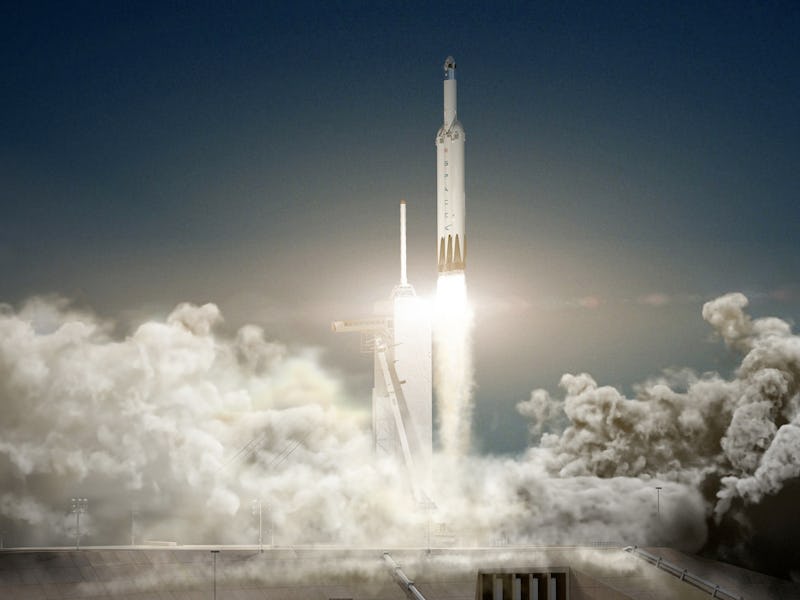By late 2018, SpaceX plans to send humans to the moon for the first time since 1972. The key technology that will make such an undertaking work will be the company’s upcoming Falcon Heavy rocket, one of the most powerful rockets in the world.
These two people have already paid a “significant deposit” to fly to and circumnavigate the moon on the Dragon 2 spacecraft. The Falcon Heavy will launch Dragon 2 and its crew to the moon about a year after the first testing of the rocketry system later this summer. Early 2018, Dragon 2 is expected to fly NASA astronauts to the International Space Station, and the lunar mission will occur just a few months after that.
Since these two private citizens are not astronauts, prior to their mission of a lifetime, they’ll have to go through health and fitness tests, as well as training for space flight. SpaceX plans to launch the rocket from the Kennedy Space Center’s historic Pad 39A, the same launch pad used by Apollo astronauts when they visited the moon.
“Like the Apollo astronauts before them, these individuals will travel into space carrying the hopes and dreams of all humankind, driven by the universal human spirit of exploration,” SpaceX said in a statement.
The layout of Merlin 27 engines across three boosters in the Falcon Heavy.
The rocket’s many Merlin engines generate 5 million pounds of liftoff thrust, the Falcon Heavy will basically be the most powerful rocket in the world — the equivalent of eighteen 747 aircrafts at full power.
Here’s how SpaceX puts it: “With a total of 27 first-stage engines, Falcon Heavy has engine-out capability that no other launch vehicle can match—under most payload scenarios, it can sustain more than one unplanned engine shutdown at any point in flight and still successfully complete its mission.”
A rendering of the Falcon Heavy rocket carrying the Dragon 2 capsule off the launchpad.
That record will only hold until NASA fires up its Space Launch System — another heavy-lift rocket the agency is building in anticipation for more deep space missions under a larger goal to go to Mars. The first SLS launch won’t occur until 2018, however, so SpaceX will have a bit of time to hold onto its record.
Designed to carry people into deep space, Falcon Heavy is the first version of the type of rocket systems SpaceX is building for its own plans to send people to Mars. The Falcon Heavy can lift over 119,000 pounds to orbit — the same as lifting a fully loaded 737 jetliner — filled with passengers, luggage, and fuel. Only the Saturn V moon rocket, last flown in 1973, sent more payload to orbit. The Falcon Heavy has two-thirds the thrust of the Saturn V.
With the first Falcon Heavy launch being prepped for later this year, SpaceX is moving fast to become not simply the first party to send people to Mars, but, it seems, the first party to send people back to the moon, too.
